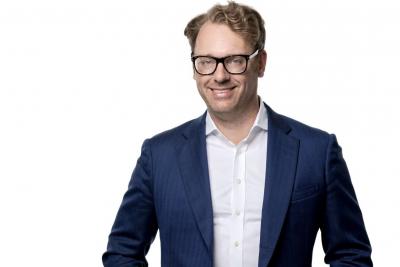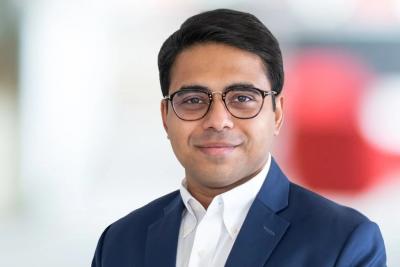‘Private Banking In A Box’: Privé Technology’s platform providing a plug-and-play toolbox for wealth managers
Amidst the scramble for banks, financial advisors, independent asset managers and insurance companies to go digital, Privé’s David Lee speaks to Hubbis about his company’s platform that promises true functionality and scalability for institutional clients.
Executive summary
Privé Technologies, named the fastest-growing technology company in Hong Kong by Deloitte and ranked by the Financial Times' FT 1000 APAC as the 14th fastest-growing company in Asia in 2018, provides a scalable, easy-to-use software platform for institutional clients to quickly get up to speed in the current race to digitalise their offerings in order to meet changing client expectations and financial regulations. This modular, easily integrated 'build versus buy' solution has made the digitisation process a much easier and more affordable option for companies ranging from the largest financial institutions to micro or SME enterprises.
______________________________________________________________________________________________________________________________
According to David Lee, Chief Revenue Officer at Privé Technologies in Hong Kong, the small idea that became this growing company was “how to replicate investment strategies in client portfolios, without the need to bind them in funds or structured products.
As testament to the scalability of its systems, Privé currently has over 60 enterprise and B2B clients, ranging from the largest bank in the world to a two-man independent financial advisory company.
“You could think of us as ‘private banking in a box’ - get our modular platform, put it onto your core banking system and you will essentially become a digitised private bank, on par with that of any global private bank from Europe or the U.S.”
And why are institutions becoming interested in doing this? “This is a result of people understanding the fact that regulations are changing,” Lee says. “There’s the MiFID II (Markets in Financial Instruments Directive) in Europe, there is the 401(k) fiduciary requirement that’s soon going to be enacted in the United States, there’s a suitability requirement that’s going to be enacted by the Securities and Futures Commission in Hong Kong. All these necessitate a more digitised form of engagement.”
Lee says because a rising number of millennial clients also expect to be able to gauge and manage their wealth digitally, RMs can no longer “just sit down with someone at a bank, and then try to get a product out to that person.”
Another reason is the need to differentiate. “The more data that you can gather about a client and their likes and dislikes, the more you can properly serve them with different means and different products that you can create on the platform. You create a personal connection, and this can be done on a much more scalable basis with the assistance of technology.”
The fastest-growing tech company in Hong Kong
Recognised by Deloitte in 2017 as the fastest-growing technology company in Hong Kong and ranked by the Financial Times’ FT 1000 APAC as the 14th fastest-growing company in Asia in 2018, Privé’s platform provides end-to-end solutions for banks, financial advisors, independent asset managers and insurance companies.
With global offices and presences in Hong Kong, Singapore, Taipei, Korea, Thailand, Austria, Germany and the UK, Privé serves over 60 enterprise and non-institutional clients in Europe and Asia, with 75% of its revenue coming from clientele in Asia.
According to Lee, Privé is looking to increase its headcount from more than sixty full-time employees to 100 by the end of the year. Its IP is currently located in Hong Kong, and the majority of its employees comprise its programmers, systems developers and project managers based there.
The platform enables an institution to offer private banking capabilities in order to engage different segments of end customers. “You can create portfolios for clients, you can rebalance portfolios for clients and then monetise and monitor them, and make sure that the clients reach their goals with respect to specific investments,” Lee says.
Privé’s two co-founders, Julian Schillinger and Charles Wong, previously worked together at JPMorgan. “Both were from the structured product side,” Lee says. “Charles was heading sales for JPMorgan to financial intermediaries, and Julian was the senior executive who was responsible for index structuring.”
“In the 1990s and 2000s, it took a lot of time to manufacture these products. There was no robo advisory, artificial intelligence or algorithms,” he remembers. “The only thing would have been excel files that were linked together to reflect correlation among different factors, such as pricing, risk allocation and other characteristics of a structured product, which could be reflected in a term sheet and then circulated to institutional investors.”
Given this pain point, the small idea that became the inspiration for Privé was how to digitise and create bespoke structured products.
Lee says: “Once Privé was able to create this digitised journey for structured products, people starting asking, ‘How do you do this equity? How do you do it with fixed income? How do you do with private equity or hedge funds?’ So that snowballed from a simple question of ‘how do you create a bespoke structured product’ to ‘how do you create a bespoke portfolio for a client’. That’s exactly what we do in a digitised way for our institutional clients.”
Privé systems are scalable to enable advisors to pick and choose the modules that they want to create. Lee says: “That journey that their clients would need or that they feel they can offer-- this is the reason why institutional clients use us, and is a trend that has changed recently in the financial services marketplace. Think of us as a toolbox or that app store that is able to provide different functionalities for financial institutions to augment or create a wealth management journey that augments their uniqueness to their end customers.”
‘Build v Buy’ trend moving into wealth management industry
Lee says in almost every industry other than in financial services, component manufacturers have been playing a large role in the ecosystem of an industry. He observes that the ‘build versus buy’ theory is now permeating into financial institutions as well.
What is “build versus buy”? “Let’s take, for example, your smartphone,” he explains. “Each smartphone is different. You have an Apple, you have a Xiaomi and you have a Samsung. But the components for those cell phones are all the same. The same camera model manufacturer supplies to Apple, supplies to Xiaomi, supplies to Samsung.”
“I know that because I actually invested in, and operated, a cell phone manufacturing camera company in Hong Kong. That was our client pool. The LCD displays, the cells, the chips, everything.”
However, he continues: “The point is, even though they use the same components, each cell phone manufacturer’s end customer experience is different. That’s what they bank on to sell the phone - it is the customer experience.”
“That’s the reason why some people prefer the Apple, some people prefer the Samsung and some people prefer the Xiaomi.
And this component manufacturing paradigm is also prevalent in auto manufacturing: the Audi, the Porsche and the Volkswagen are essentially the same car - but each is tailored for a different customer segment.”
And, Lee says, the same is happening in the financial services sector. He explains: “Because up until this point, banks were always, ‘We’ll build our own wealth management technology ourselves, along with our own system.”
“But now,” he continues, “It’s a point of, how can they capture and capitalise on their uniqueness? Using that journey, how can they use components from other third-party vendors to recreate that uniqueness to create more revenue for their customers?”
“That’s what we do,” Lee says. “For us, our unique selling point from a platform perspective is we’re all front office guys. We’re all investment bankers by trade. So for us, if someone comes to us and says, ‘Listen, I want you to spend your money on something that will reduce your costs’, that’s not really going to move the needle for me. But if someone can tell me, ‘Listen David, you can sell 10 times more with 10 times less effort and you’ll get a big bonus check at the end of the day’, then that’s something that interests me. And that’s how we engage these clients.”
Simplifying outdated processes
Up until recently, even some major banks were still vexing customers by using outdated and unwieldy legacy systems such as faxes. How does Privé approach such companies with their state-of-the-art systems? He says: “What we’re trying to do is ensuring that the digitisation journey is not the same journey for every single institutional client in the world, but of that particular client.”
“Let’s just take an example, let’s call it bank A,” he explains. “Bank A wants to digitise their journey. Well, the first thing that we do is to understand how they understand their risk, how they understand their client, what their clients are looking at.”
“And we try to figure out: what can we create that would enable them to accentuate their uniqueness? What will enable or motivate clients to come to them and say, ‘I want that journey. I want that experience.’”
As for that client still relying on faxes, Lee says: “Obviously faxes are still going back and forth. But we try to make it as paperless as possible. Most of our technology is actually all digitised. For instance, we do digital on-boarding. In Germany, we also provide video authentication because that is legal now. You don’t even need to go into a branch to actually open an account.”
“I think the whole point here is to ensure that not only does the end customer journey become more friendly, but the RMs themselves also come on board and become more efficient and effective in servicing their clients. In cases of larger banks, it means you don’t have to fill out four forms to do one thing.”
“We try to digitise all those forms into one form; you fill out one form and all that information is shared among offices and departments,” he says.
This is made possible by the fact that Privé modules are integrated. For example, its wealth or planning modules are integrated with the robo or reporting modules, and this helps to ensure that institutions and RMs can grow the wallet share from an end client and, ultimately, assets under management.
Handling the competition
But with other ‘component manufacturers’ of financial services also in the market, how does Privé differentiate itself from the rest? Lee is confident that “The existence of other companies only helps the market recognise the viability of FinTech throughout the region. Competition just makes us better and pushes us harder to become more innovative.”
“There are a couple of things that we believe differentiate us,” he says. “The first thing is the fact that we are profitable. We’ve never taken outside money, we’ve never taken outside investment, and we’ve always put back the capital that we’ve earned to build the company that you see today. This actually covers the question of ‘how we run the business’, which I think is an incredibly underrated ability of FinTech companies. After all, all FinTech companies are a business, and running it successfully should be a differentiating factor - especially after seven years.”
“The second thing is that the general thinking behind FinTech is that you should have a ‘depth of solution’,” he observes. “You do one thing very, very well, whether it’s knowing your customer (KYC), anti-money laundering (AML), portfolio management or portfolio construction. You see a lot of companies like that: you see KYC companies, you see AML, you see block chain companies, you see portfolio management companies. For us, what’s different is that we have a breadth of solutions as opposed to a depth of solutions. In other words, we don’t think of ourselves as merely one solution, but a platform with integrated functionalities, which you can utilise based on the wealth journey you want to offer your end customers.”
“The reason why I think this works is the fact that when you’re marketing to institutional clients, the fact is, is that even if you do, let’s say, KYC very well, the process to on-board with respect to a large institutional client takes a lot of time. So, you have to have a lot of stakeholders to move the needle for what essentially is a ‘niche’ pain point.”
“For us, because we have all these different modules that are integrated like Lego blocks, we can provide that complete journey without having to have a whole IT team on the institutional client side to build it from scratch. This is where we believe the description of an ‘out-of-the-box’ solution describes our platform. This is a key USP for us.”
Lee continues: “One more way Privé is differentiating itself is that we don’t consider ourselves professional consultants or professional trainers,” he says. “But once we roll out a platform for an institutional client, not only does the end customer need to know how to use it, but the institutional client and the advisors that they employ also need to know how to use it properly.”
“This really makes us think about how to better educate and train, and emphasise the ecosystem, so that our client can provide feedback on the advantages and disadvantages to us, so that we can actually better our platform. The whole vertical setup that we’re able to provide, I think, enhances the ability, the viability and the value of the platform to the extent that it becomes an ecosystem and, ultimately, a distribution platform.”
Priorities
As for Privé’s priorities going forward, Lee says: “We are working on the next generation algorithm in terms of our artificial intelligence, which we’ve already patented. We were very grateful for the recognition from KAPLAN, a leading provider of professional training programs, which has declared that we have the number one robo-advisor in Asia. They actually went in and saw how we performed our algorithmic calculations, based on a multi-asset, multi-currency and multi-jurisdictional calculation model. It was focused on our quants abilities, which was different from any other study in which we have participated before.”
The priority? “We’re looking at the emergence of a data hub, which I think is the next step and evolution in creating that wealth ecosystem and this has been our dream from day one. This technology will determine how we can ensure that financial information and data are verifiable and will be able to connect different entities and different services together.”
Lee believes the future of financial services is in disintermediation. He says: “Right now, the traditional way of managing asset will be - let’s just take an example - you have an advisor with bank A. You have assets there. Then, as a result of these assets, you will most likely have to buy products and services from bank A.”
He continues: “So, it’s very linear. You go to bank A, you talk to your advisor. The advisor says, ‘You have whatever many dollars in your bank account. We have this great product that you can invest maybe part of it. How about it?’ That was the traditional way.”
However, Lee predicts, “I think in five years, what will happen is that you may have your advisor in bank A, but you will have your assets in bank B. Then, you will have services or products that you want to buy from bank C.”
He believes that this type of model only works if institutional clients have a data hub connecting such parties and services. “And I think that will be really big for us, because then that ecosystem becomes so much more. It becomes a digitised distribution channel,” he says.
One more priority is client engagement. “We are actually working on our next-generation chatbot, which will enable you to check your wealth without necessarily having to understand or engage with an advisor. And, enable you to understand what’s going on with your portfolio, in an easier way. Again, this is the principle of omni-channel engagement, which derives from this spider web of connectivity, which is our platform.”
Looking forward
Lee believes that the potential for the wealth management market in Asia is just beginning to take off. He explains: “Financial incumbents and new entrants are now realising that the digitisation of wealth management, starting with engagement, is a ‘must’ to either remain relevant or to even enter the market. From our perspective, this is the pain point that we are trying to address - the integration of the journey from client engagement, client on-boarding, portfolio creation to portfolio management and onwards in a seamless and digitised way.”
But Lee says that this cannot be a “one-size-fits-all” approach in terms of digitisation. For example, in China, the digitisation focuses more on a DIY or a do-it-yourself model. While in Southeast Asia, Lee observes that a “bionic advisory” model may be more applicable as there are many wealth advisors, but that they may not all be “well versed” in what wealth management is.
“For them, wealth management is taking a piece of paper, putting in front of an end customer, and saying sign here, you are going to get 10% per year, don’t worry about it. So it is more about blatant product pushing, rather than a holistic service based on creating a portfolio that is best for that end customer and continuing to service that customer. So we really need to transform this mind set from a commission-based to a service fee based model, and we can do this through digitisation.”
“Hong Kong and Singapore are unique because these are the most developed wealth management centers in Asia,” he says. “In particular, in the external asset management, or EAM space, I think that there is an increasing need for an EAM to manage across connectivities of different banks and different institutions.”
“I think as that happens, what we will see is a corollary effect of the consolidation of the private banking market, where private banks will want to consolidate assets under management and provide services in a custodial aspect and become the execution branch for this growing EAM. For this, you need connectivity.”
With only 5% of wealth currently being managed by EAMs in Asia, Lee believes that there is plenty that can be done if the region wants to catch up with the 40% threshold that is the current level of wealth managed by EAMs in Europe. “Essentially, there is an opportunity for the EAM market to grow, especially in Hong Kong and Singapore. We are seeing an explosion of new EAMs being registered and actively managing assets in Singapore versus two or three years ago.”
“We are receiving frequent regulatory and related types of enquiries from the EAMs and even regulators themselves, as to how digitisation can address this market phenomenon.”
For now, Lee says, “The majority of the wealth managers don’t really have a system”. But, he adds, “What we are able to provide is not a ‘take-it-or-leave-it’ system that is set in stone. So, it is not a binary choice of, ‘if you don’t take the whole system, then there is no system.’ It is more about trying to select the different modules and functionalities that we have within the platform. So, think of us as a toolbox to assemble a wealth management journey for end customers the way that you want to service them and to be able to keep your own unique selling points for those customers to create that wealth ecosystem.”
Five integrated solutions on one platform
Privé provides five different integrated solutions on its platform for institutional clients who want to digitise their own wealth management journeys: client engagement; portfolio construction; portfolio management; compliance and digital operations; and an open application programming interface (API), where programmers only need to add functionalities to their own existing architecture or front end in order to integrate with Privé’s platform.
Lee explains that the solutions, which can be further broken down into modules and/or functionalities, can take end customer relationships of institutional clients one step further in portfolio management on an on-going and interactive basis, compared to the traditional methods which did not make it possible for engagement at such a granular level.
“That portfolio management aspect, powered by our award-winning AI, combined with our proprietary virtual fund technology, report aggregation, digitised engagement and the indigenous characteristics of that particular institutional client, these are all factors that can be integrated seamlessly into Privé’s platform to create that holistic, 360-degree, wealth management ecosystem to better service end customers in a way that they perceive added value.”
Getting Personal
David Lee says he 'stumbled into FinTech'. A Harvard Law School graduate, he started working at a Wall Street law firm. When he went to Hong Kong in 2004 to set up his firm's Hong Kong offices, he found himself drawn to the investment banking world where he met Julian Schillinger and Charles Wong, Privé's co-founders. They invited Lee to check out their business, and, when he saw the opportunities there, he decided to join them. Lee says his present job is the toughest he's ever had, but the one he loves the most, because it enables him to help people in personal ways.
Aside from working at Privé, Lee's other passion is American football, and for that he says he will stay up until dawn to watch NFL or college football broadcasts from the States. Being born in Oklahoma, the son of first-generation Korean-Americans, he is a 'life blood' Sooners fan, as well as the Dallas Cowboys.






